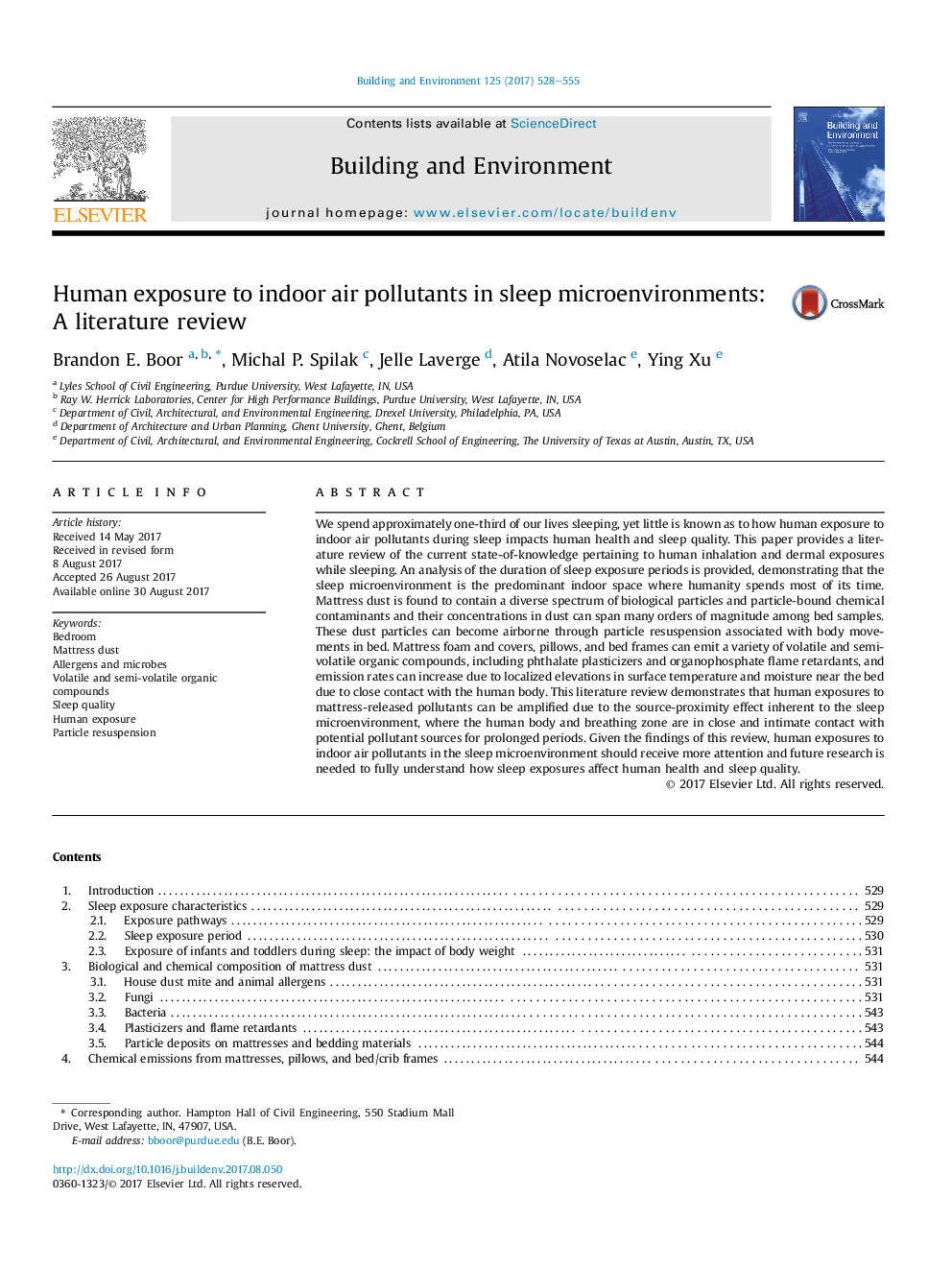| کد مقاله | کد نشریه | سال انتشار | مقاله انگلیسی | نسخه تمام متن |
|---|---|---|---|---|
| 6479211 | 1428367 | 2017 | 28 صفحه PDF | دانلود رایگان |
- People spend 1/3rd of their lives sleeping and human exposures to indoor air pollutants during sleep periods may play an important role in human health and sleep quality. This review provides an introduction to IAQ in sleep microenvironments and highlights future research needs.
- Beds and pillows serve as settled dust reservoirs for a complex mixture of bacteria, fungi, allergens, and particle-bound semi-volatile organic compounds (SVOCs), which can be readily stirred-up, or resuspended, upon tossing and turning during sleep.
- Bedding products, such as crib mattresses and frames, emit a variety of VOCs and SVOCs into the air around a sleeping person, including phenol, styrene, formaldehyde, phthalate and alternative plasticizers, and brominated and organophosphate flame retardants.
- Human exposure to mattress-released pollutants is amplified by the source-proximity effect of the sleep microenvironment due to the close and intimate contact of the human body with the bed.
We spend approximately one-third of our lives sleeping, yet little is known as to how human exposure to indoor air pollutants during sleep impacts human health and sleep quality. This paper provides a literature review of the current state-of-knowledge pertaining to human inhalation and dermal exposures while sleeping. An analysis of the duration of sleep exposure periods is provided, demonstrating that the sleep microenvironment is the predominant indoor space where humanity spends most of its time. Mattress dust is found to contain a diverse spectrum of biological particles and particle-bound chemical contaminants and their concentrations in dust can span many orders of magnitude among bed samples. These dust particles can become airborne through particle resuspension associated with body movements in bed. Mattress foam and covers, pillows, and bed frames can emit a variety of volatile and semi-volatile organic compounds, including phthalate plasticizers and organophosphate flame retardants, and emission rates can increase due to localized elevations in surface temperature and moisture near the bed due to close contact with the human body. This literature review demonstrates that human exposures to mattress-released pollutants can be amplified due to the source-proximity effect inherent to the sleep microenvironment, where the human body and breathing zone are in close and intimate contact with potential pollutant sources for prolonged periods. Given the findings of this review, human exposures to indoor air pollutants in the sleep microenvironment should receive more attention and future research is needed to fully understand how sleep exposures affect human health and sleep quality.
159
Journal: Building and Environment - Volume 125, 15 November 2017, Pages 528-555
